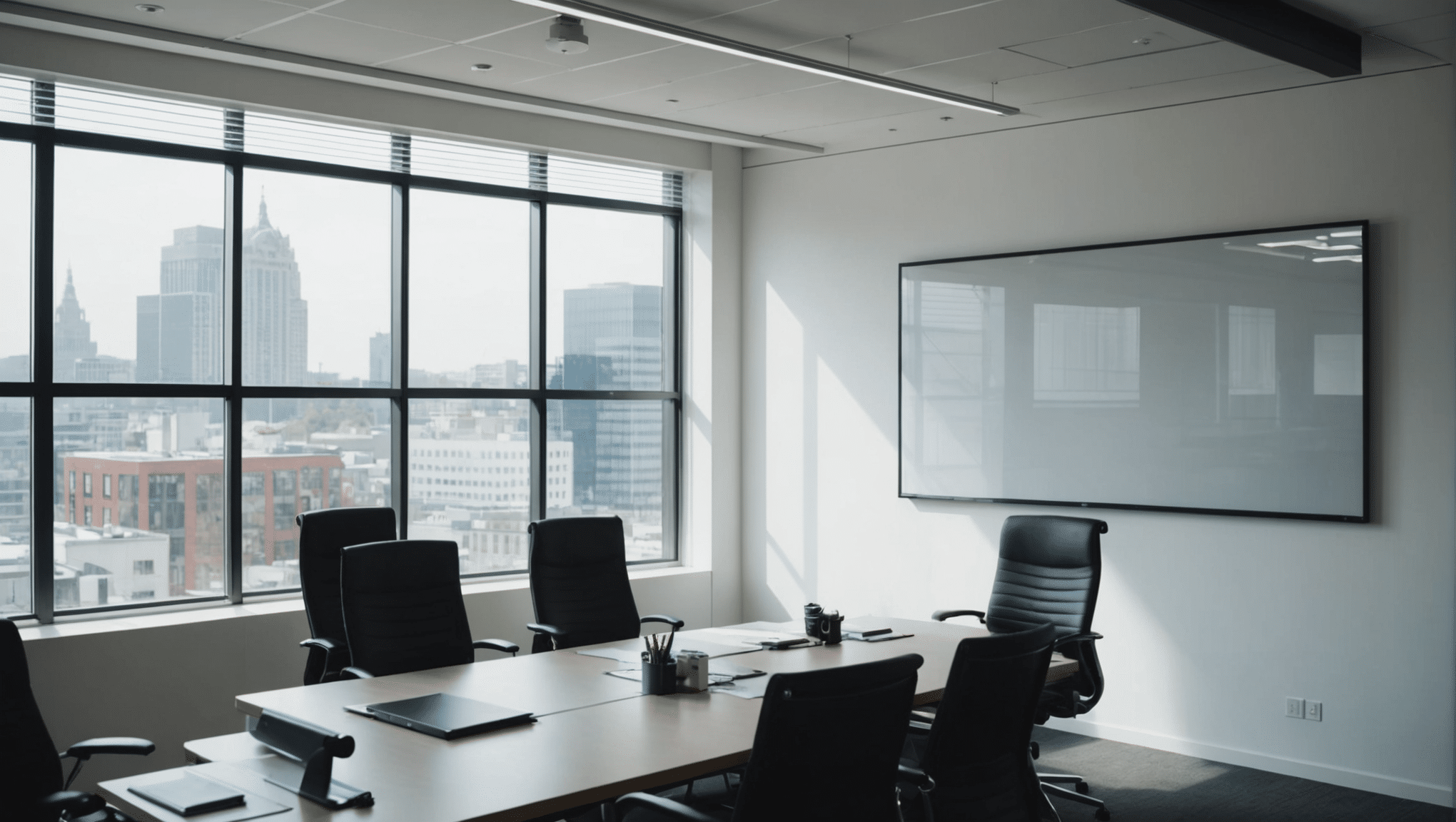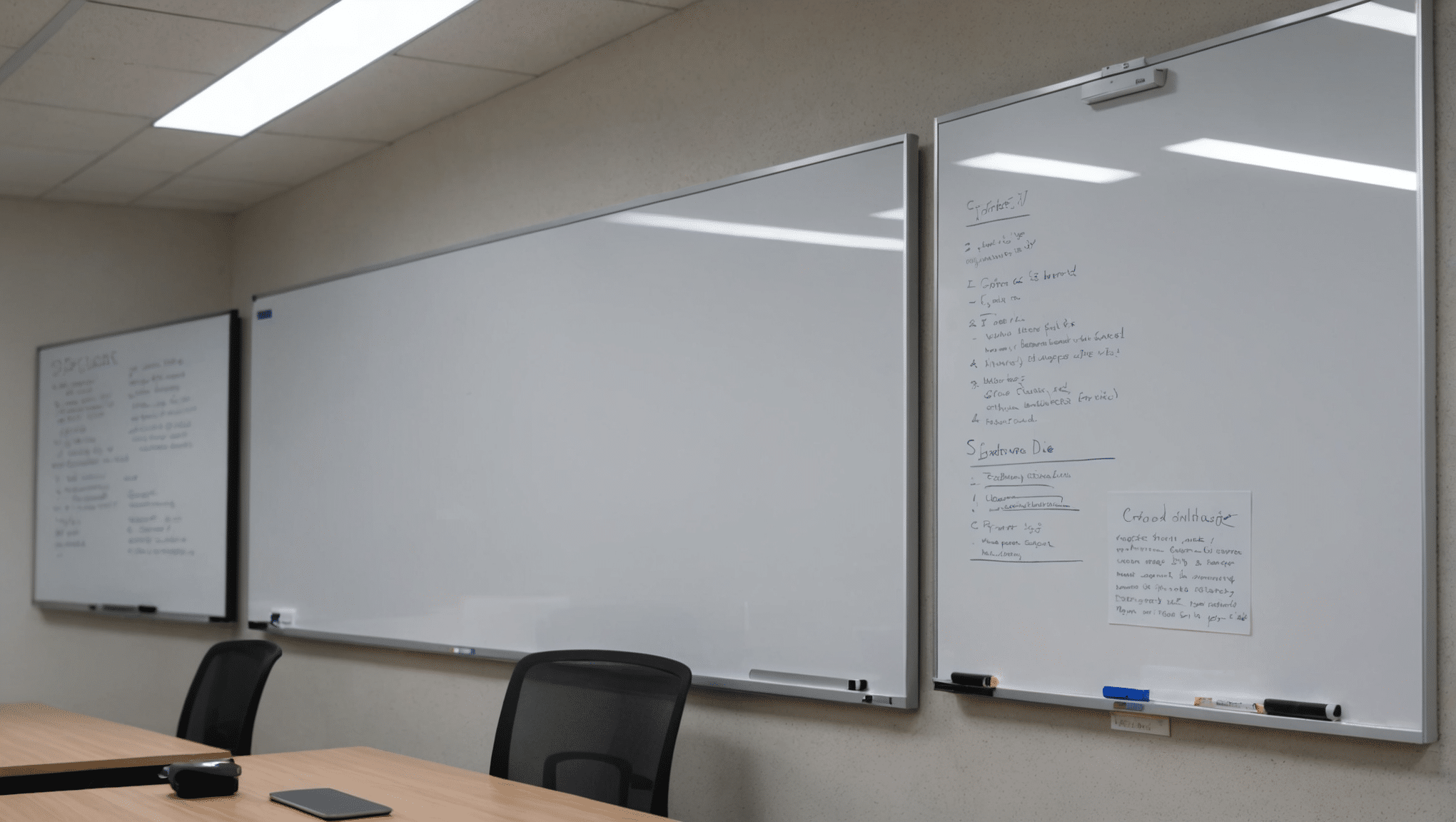
Whiteboard vs Glass Board: Which One Truly Outperforms the Other?
Discover the KEY DIFFERENCES between whiteboards and glass boards. Learn which option offers BETTER DURABILITY, aesthetics, and overall VALUE for your workspace or classroom.
Last Updated on 06/10/2025
When choosing between a whiteboard and a glass board, it’s essential to understand their differences. Both offer unique benefits for personal, educational, and professional settings. This article will compare their materials, durability, ease of installation, and aesthetic appeal to help you make the best purchasing decision.
Which is better: whiteboard or glass board?
Glass boards offer better durability, a modern aesthetic, and easier maintenance, while traditional whiteboards are more cost-effective and simpler to install. Your choice depends on your budget, space, and how frequently the board will be used.
Key Considerations for Choosing Your Whiteboard
- Durability is crucial for high-traffic areas, with ceramicsteel and glassboards offering the most longevity.
- If you’re on a budget, melamine whiteboards are a cost-effective choice but require more maintenance.
- Glassboards offer a modern, sleek design and are easy to clean, making them ideal for stylish workspaces.
- Consider the installation requirements—whiteboards are generally easier to mount than heavier glass boards.
- Whiteboard paint offers a flexible solution but may lack the durability of traditional boards.
- Choose a board that suits your workspace’s aesthetic and functionality needs for maximum productivity.

Whiteboard Materials: Melamine vs CeramicSteel
Whiteboards come in various materials, each with its pros and cons. Melamine whiteboards are popular due to their low cost, but they tend to wear out over time, especially with frequent use. Staining and ghosting from marker pens can also be common issues, making them less ideal for high-traffic areas.
On the other hand, ceramicsteel whiteboards are a more durable option. The ceramic-coated surface resists staining and can withstand heavy use. Plus, ceramicsteel is magnetic, so you can use magnets to attach paper and notes, adding to its versatility in brainstorming sessions or presentations. However, this durability comes at a higher cost.
If you’re weighing your options between melamine and ceramicsteel, consider your usage needs. For occasional home use, melamine might be sufficient. For a busy office or classroom, ceramicsteel offers long-lasting performance. Visit this whiteboard buying guide for more information on these options.
| Feature | Melamine Whiteboard | CeramicSteel Whiteboard |
|---|---|---|
| Durability | Wears out over time with heavy use | Resistant to staining and long-lasting |
| Cost | Low cost, budget-friendly option | Higher cost, premium option |
| Magnetism | Not magnetic | Magnetic, versatile for attaching notes |
| Maintenance | Prone to staining and ghosting | Easy to clean, minimal maintenance |
Glassboard Benefits: Durability and Glare
Glass boards, or glassboards, have been gaining popularity for their sleek design and impressive durability. Made from tempered glass, these boards are highly resistant to scratches and dents, unlike traditional whiteboards that show wear and tear over time. Plus, they’re much easier to clean, with no staining issues.
One major benefit of glassboards is their resistance to glare, making them easy to read from different angles under various lighting conditions. This makes them a good choice for modern offices with bright, open designs. Glassboards also give off a more professional and polished look compared to standard whiteboards.
Although glassboards tend to be more expensive, their long lifespan and stylish appearance can make them a worthwhile investment. If you’re looking to upgrade your space with a durable and modern solution, check out the options for glassboards available here.
Ease of Installation: Whiteboard vs Glass Board
When it comes to installation, whiteboards and glass boards have different requirements. Traditional whiteboards are usually lighter and easier to mount. They can be installed on walls using basic hardware, making them a convenient option for most environments, whether it’s in a home office or a classroom.
Glass boards, being made of tempered glass, are significantly heavier. This means that installation requires stronger mounting hardware and possibly professional help, especially for larger boards. While the added weight gives them a solid, high-end feel, it also makes them more challenging to install securely.
For those who prioritize ease of installation, a standard whiteboard might be the better option. However, if you’re willing to put in the extra effort (or hire a pro) for a more modern and durable setup, a glass board could be worth the added hassle.
Whiteboard Paint: An Alternative Option
If neither whiteboards nor glass boards appeal to you, whiteboard paint offers a creative alternative. With whiteboard paint, you can turn almost any wall into a dry erase board. This is a great way to maximize your workspace, especially in smaller areas where a traditional board might feel restrictive.
While whiteboard paint can give you more flexibility in terms of space and design, it does come with its challenges. The application process requires careful preparation and several coats of paint. Additionally, not all whiteboard paints offer the same quality, so choosing a high-end product is key to ensuring a smooth writing experience.
This option is ideal for those who want a customized and seamless look. However, it may not be as durable or easy to maintain as a glass board or a ceramicsteel whiteboard. Consider your long-term needs before diving into this project.
Conclusion
At Viking, we understand that choosing between a whiteboard and a glass board depends on your needs and workspace. Both options offer unique benefits, whether you’re looking for cost-effectiveness, durability, or a modern design element.
Our passion for workplace solutions ensures that no matter which option you choose, you’ll be investing in a product that boosts productivity and complements your space. If you need assistance finding the perfect solution, Viking is here to help.
Frequently Asked Questions
How does a glass board compare to a whiteboard for durability?
Glass boards, especially those made from tempered glass, are more durable than traditional whiteboards. They resist scratches, dents, and staining from marker pens. While whiteboards, especially melamine ones, can wear out over time, glassboards maintain their appearance and performance for much longer, even with heavy use.
Do glassboards cause glare under bright lighting?
Glass boards can reflect light, but they are designed to minimize glare, making them readable from various angles under different lighting conditions. In comparison, whiteboards may also produce glare, especially in spaces with direct lighting. Placement and lighting adjustments can help reduce glare for both options.
Is it easier to install a whiteboard or a glass board?
Whiteboards are generally easier to install due to their lighter weight and simple mounting hardware. Glassboards, being heavier, often require more robust support and may need professional installation, especially for larger sizes. The difference in weight and installation complexity is an important factor to consider when choosing between the two.
Can whiteboard paint replace traditional whiteboards and glassboards?
Whiteboard paint allows you to turn an entire wall into a dry erase board, offering flexibility in design and space usage. However, it may not be as durable or easy to maintain as a traditional whiteboard or glassboard. It’s a suitable alternative for those seeking a more customized, integrated writing surface.









